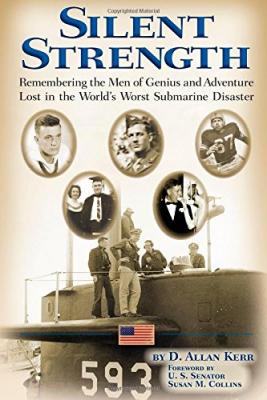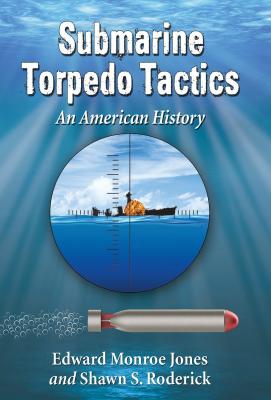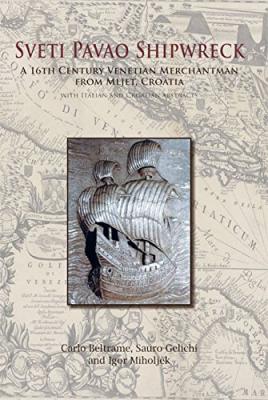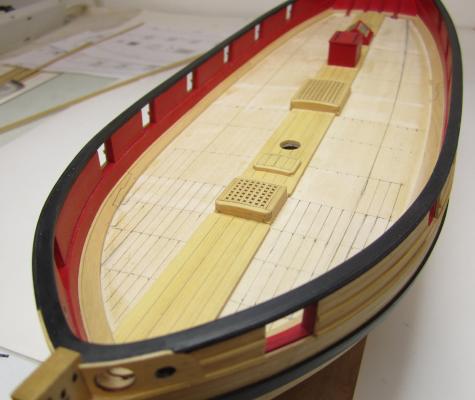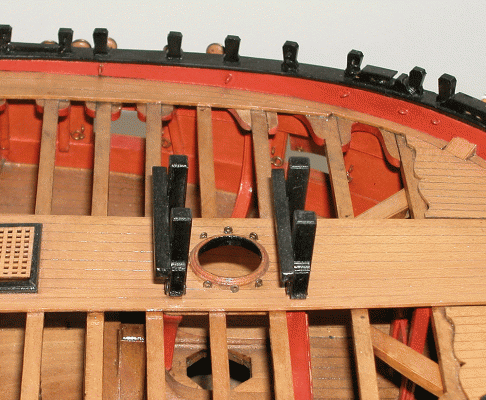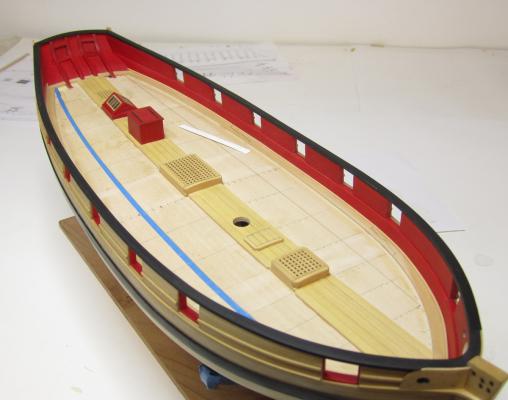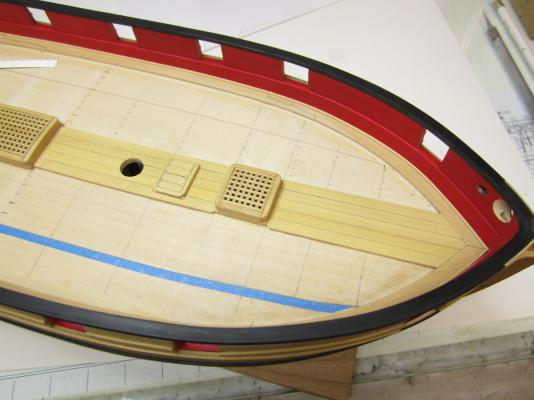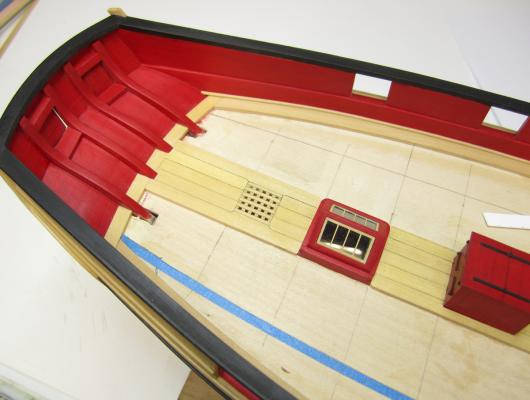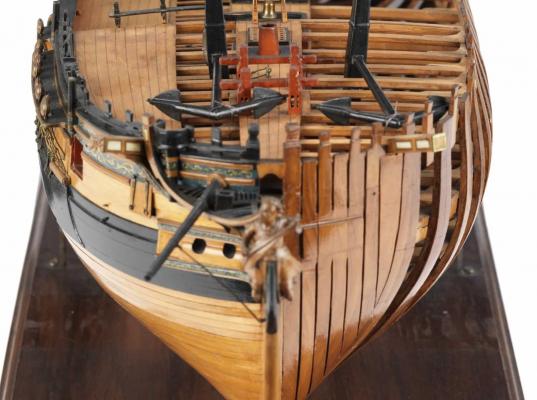-
Posts
9,660 -
Joined
-
Last visited
Content Type
Profiles
Forums
Gallery
Events
Everything posted by Chuck
-
Silent Strength: Remembering the Men of Genius and Adventure Lost in the World’s Worst Submarine Disaster By D. Allan Kerr Portsmouth, New Hampshire: Jetty House, 2014 6-1/4” x 9-1/4”, hardcover, xvix + 124 pages Photographs. $29.95 ISBN: 9781937721190 Silent Strength (which takes its name from the motto of USS Thresher) is a compilation of articles by D. Allen Kerr published during 2013 to commemorate to fiftieth anniversary of the boat’s loss as tributes to the men who served aboard the submarine. As such, it does not concentrate heavily on the design or construction aspects, nor on details of Thresher’s loss, but more on its legacy. From an operational perspective, Thresher’s most important legacy (as Kerr notes frequently) was the development and implementation of SUBSAFE: the Navy’s quality assurance program designed to maintain the safety of the nuclear submarine fleet. Thresher also was the lead boat for the fleet’s advanced attack submarines designed to hunt down and overcome the Soviet Union’s expanding nuclear submarine force through speed, silence, deep-diving ability, and the deployment of advanced technologies. Thresher’s human legacy is the lives of the 129 sailors lost in this tragic disaster. The story of many of their lives is the central element of Kerr’s book. Kerr’s skillful writing brings out, over and over again, the accomplishments of seemingly ordinary men, from a whole range of social and educational backgrounds, who came together as a cohesive team to operate this submarine that was on the cutting technological edge of its time, thanks to training, dedication, enthusiasm, selflessness, and commitment. This is a fascinating exploration of the often obscure nature of the submarine service’s social history. Silent Strength’s melding of operational and technical history with evocative retellings of the lives of Thresher’s crew is a wonderful tribute to these men. Michael O’Brien Tampa, Florida
-
Submarine Torpedo Tactics: An American History By Edward Monroe Jones and Shawn S. Roderick Jefferson, North Carolina: McFarland and Company, 2015 6” x 9”, softcover, viii + 221 pages Photographs, diagrams, notes, bibliography, index. $45.00 ISBN: 9780786496464 During two world wars, the menace of submarine warfare against merchant shipping loomed large in naval strategic and tactical discussions. Germany’s U-boats came extremely close to forcing the Allies to the negotiating table during World War I and were a major threat to Allied success in World War II. How ironic it then is that the single incontestably successful submarine campaign against merchant shipping should have been that of the United States Navy against Imperial Japan in World War II. Submarine Torpedo Tactics lays out, in a wonderfully readable manner, the story of this evolution in the United States Navy from just before World War I to the present (within the limits of information publically accessible). The authors bring together a vast array of material, much of which has been published previously in snippets but never before presented together in such a coherent format. The net result is probably the best explanation yet of how submarine attacks have been and are now conducted. If a reader wants to know why American submarines were so successful in their assault on Japan’s shipping during World War Ii and they proposed to keep Soviet ballistic missile submarines at bay during the Cold War, this is the place to find the answers. Of necessity, the requirements of their thesis obliged the authors also to explain the development of submarine design in the United States. Their success is such that Submarine Torpedo Tactics may well be the best short outline of this process yet in print. It is concise, it highlights the major milestones, and it presents sufficient technical detail to make its case without overwhelming the non-specialist reader with esoteric terminology or concepts. Submarine Torpedo Tactics also includes a major bonus in the form of stories illustrating the lives of the operators, ranging from the antics surrounding theft of a totem pole by crewmen from the missile boat Growler through the installation (and use) of a Steinway grand piano aboard the attack submarine Sturgeon to vivid descriptions of underwater gyrations by American and Soviet submarines during the Cold War. Though short (in light of the magnitude of its topic), Submarine Torpedo Tactics displays excellence on so many levels. anyone—academic, lay researcher, or simply interested reader—can only learn from this most enjoyable and informative study. Steven Fitzgerald Wilmington, Delaware
-
Sveti Pavao Shipwreck: A 16th Century Venetian Merchantman from Mljet, Croatia By Carlo Beltrame, Sauro Gelichi and Igor Miholjek Oxford: Oxbow Books, 2014 8-1/4” x 11-3/4”, softcover, vii + 180 pages Photographs, diagrams, maps, appendix, notes, bibliography, index. $70.00 ISBN: 9781782977063 Distributed in the United States by Casemate Academic, Havertown, Pennsylvania Many people forget (or never knew) that much of the eastern coastline of the Adriatic Sea was territory of the Republic of Venice until well into the eighteenth century. As a result, the waters off the coast of Croatia and, to a somewhat lesser extent, Montenegro and Albania are likely to be the final resting places of many Venetian ships, wrecked while trading within the Adriatic or voyaging from elsewhere in the Mediterranean. During the past twenty years, in particular, archaeologists have been searching these waters in the expectation of locating wrecks of Venetian ships. This book about the Sveti Pavao shipwreck is a preliminary report on six years of work on the site by members of a joint Croatian-Italian project that has been excavating and conserving objects from what is almost certainly a sixteenth-century Venetian merchant vessel, one of a number of such craft located in the same general area over the past thirty years. The wreck is quite deep (about 40 meters (130 feet) below the surface) and also quite concentrated. Because the team had very limited funding, it took a somewhat innovative approach to recording the site by making extensive use of photogrammetry. This both substantially cut the amount of time divers had to spend on the bottom recording data, since they could use photographs rather than manual measurements, and also opened up interesting possibilities for interpretation, because the imagery could be manipulated both to uncover information that might have been missed during a visual scan and to generate three-dimensional representations of the wreck and site. This particular preliminary report concentrates primarily on objects that have been recovered and undergone initial conservation. There is much cargo—mainly high-end luxurious metallic and ceramic vessels—coinage, and animal remains that may represent livestock transported as cargo or for consumption by crew and passengers. There is also an impressive array of mid-sixteenth–century ordnance, most of which are breech-loaders. It is interesting to note that the barrels of the breech-loaders are bronze, while the breech chambers are iron; an interesting detail for researchers. The remains of the hull are very limited. Nevertheless, photogrammetry and subsequent three-dimensional modeling proved very useful in interpreting the remains for archaeologists and, especially, for public display (since the team had decided to leave the hull elements in situ rather than raise them for conservation and display). This preliminary report provides a fascinating insight into elements of sixteenth-century Venetian trade and the ships that conducted it. We can only look forward to more information as research funding permits. . David Djanogli Chippenham, Wiltshire
-

2015 NRG Conference Update - MYSTIC
Chuck replied to Chuck's topic in NAUTICAL RESEARCH GUILD - News & Information
I just wanted to let all of you folks know that as the conference approaches we have quite a few folks who will be attending. We may in fact have close to 175 attendees before it all begins. But as an aside I wanted to mention to those who have never attended one of these and havent signed up for this one, they can still make a day out of it and come visit. We have two very large rooms at the hotel. One room we call the vendor/model room is open to all. You dont have to be signed up to drop by and talk ship modelling with your fellow hobbyists. You can visit the many vendor tables and have a look at dozens of models on display. All brought in for display by those attending. The other large room is where we have our talks and table top demos. You must be signed up and pay for those. But if you are looking for something fun to do. Come out and spend the day at Mystic Seaport or the aquarium. We are right across the street from the aquarium. Then pop your head in to meet and talk to all of the ship modelers attending. Browse the vendor tables and say hello!!! I am sure you will see how much fun it is and maybe decide to sign up next year and attend!!!! You may even see how joining the NRG is going to be fun and meet a whole bunch of new friends.!!! The 2015 Conference will be in Mystic, Ct. on Thursday October 22 thru Saturday October 24. I would love to see you guys and will be at the Syren vendor table with my wife Patti and son Roman. Here is a list of the other vendors who will be at the show. Crown Timberyard - Milling services and wood for Ship Models Bluejacket -Ship model kits and supplies Byrnes Model Machines - Ship Model Power Tools Seawatch Books - Nautical history and Ship model books Seafever Books - Out of print Nautical history and Ship model books Ages of Sail - Ship model kits and supplies -
Nice progress!!! You are getting a lot done. It looks just great.
- 1,306 replies
-
- syren
- model shipways
-
(and 1 more)
Tagged with:
-
Looks very good Dave. But you will know when its completely faired when all of the laser char is removed from the bulkhead edges. Just a little more to go...
- 209 replies
-
- cheerful
- Syren Ship Model Company
-
(and 1 more)
Tagged with:
-
Really nice shots of a great looking model!!!
- 2,191 replies
-
- confederacy
- Model Shipways
-
(and 1 more)
Tagged with:
-
Looking great Dave..... You might also want to consider hard maple. If you can mill it on your own it is readily available and very reasonably priced. It will be much easier to obtain a better finish that closely matched the boxwood using it. Even at Lowes or Home Depot.
- 209 replies
-
- cheerful
- Syren Ship Model Company
-
(and 1 more)
Tagged with:
-
That looks just great....Terrific work!!!
- 222 replies
-
- 18th century longboat
- model shipways
-
(and 2 more)
Tagged with:
-
Yes indeed...they are shown on the plans.
- 1,051 replies
-
- cheerful
- Syren Ship Model Company
-
(and 1 more)
Tagged with:
-
That looks great....nice photography as well. Chuck
- 335 replies
-
- 18th century longboat
- Finished
-
(and 1 more)
Tagged with:
-
Thanks John The beauty of lining off the deck is that it allows you to create a great plan of attack. If you connect all of your tick marks you will have a really good idea of how it will look. If it needs adjustment then just sand it off and start over. You can do all of this before you lay one deck plank. Imagine if you just wing it and have half the deck planked...you are sunk. Lining off the hull first helps you avoid this. I will do this at the stern next and then start cutting wood. Now if you were just going with straight planks nibbed into the waterway, would you need to line off the deck like this? Maybe not. But I think it is worth the extra work. And keep in mind you want have to cut into your waterway and risk a cutting error with a bad joint while nibbing. That takes a huge amount of time and careful chisel work. So its pretty much a wash as far as the amount of time and effort goes. The contemorary model of a cutter shown below also has tapered and scarfed deck planks vs. nibbing. You can see the tapering very clearly here. Chuck
- 1,051 replies
-
- cheerful
- Syren Ship Model Company
-
(and 1 more)
Tagged with:
-
Deck planking has started. Just a quick note about the two styles of deck planking. There were the times when deck planking was straight and nibbed into the waterway. Most are familiar with this style. I in fact drafted the plans for Cheerful this way. However, I believe that the earlier style was still in practice at this time and probably both were used. More like a transition period. In my opinion up to possibly 1820 or even later. This second style would be where tapered and hooked scarf joints were used. No nibbing into the waterway. I have decided to use the second style as the first is so common. You see it all the time. I find this more pleasing to look at as the planks are curved. Straight planks are to harsh in contrast with the curves all over the rest of the model. Folks can choose which method they prefer. I did use the scarfed method on the Confederacy but I simplified it with straight planks. In reality the planks would have tapered and curved a bit at the bow and stern. Like this below. Also note the curvature of the planking on this contemporary model. After gluing the six deck structures in position, I drew reference lines for where the deck beams would be located. This will become important later. Then I planked down the center with one strake (3/16" wide). I followed that with 2 on either side of that one. These were straight-non-tapered planks. Then I started lining off the deck much like I did for the hull planking. Although in hindsight, I should have probably tapered these 5 center planks as well. See the contemporary model image above. But they are already done, so I am moving on.... First I measured with a tick strip in 3/16" increments at the deck's widest point. The beam reference line on the forward side of the main hatch. This showed that I still have ten deck planks to put on each side. I used blue tape in thin strips to separate the deck into two belts both port and starboard. The inner belt on each side has 6 planks....the outer has four. I manipulated the tape until it curved nicely from bow to stern. Remember these are not straight deck planks. The curve is not very drastic. But it has to be taped out so you can visually check the symmetry port and starboard. Once I was happy with it, I traced the inside edge of the tape to define each belt. I removed one strip of tape in the photos below. Note the curve of the blue tape still on deck. Then, just like I did for the hull. I used my planking fan and tick strips to divide the deck up at each reference line for a deck beam. This will show me how much taper I will need in each deck plank. Its just a matter of measuring the total distance at each deck beam and transferring it to a tick strip. Then you take that tick strip to your planking fan and divide that space into six equal parts. Then you come back and transfer those ticks to your deck beam reference line. All of the planks in this inner belt will be cut flat on the ends with no scarf joints yet. I find that on most contemporary models there are only a few scarf joints.... as opposed to modern models where the builder uses way to many. I have always seen just two or three and on the rarest of occasions four hooked scarf joints against the waterway. Most people start way too early and end up with too many of them and it looks very busy. This is also true of just plain nibbing into the waterway. In addition, by curving and tapering the planks it actually reduces the need for that many of them. Thats it for now as I continue to use tick strips to define the width of the planks at each deck beam location. Then I will start cutting more wood.
- 1,051 replies
-
- cheerful
- Syren Ship Model Company
-
(and 1 more)
Tagged with:
-

3D printer at Home Depot
Chuck replied to twintrow's topic in CAD and 3D Modelling/Drafting Plans with Software
I actually still have one....a Commodore 64 mint in box with plenty accessories. .....and games. Got it when I was 16 years old. Chuck -
Yes at some point I will put together a list but probably not until I get that far along. I dont want to guess on how much rope to suggest. Chuck
- 39 replies
-
- cheerful
- Syren Ship Model Company
-
(and 1 more)
Tagged with:
-
That is very dark. But it is also coming along well.
- 39 replies
-
- cheerful
- Syren Ship Model Company
-
(and 1 more)
Tagged with:
-
Its not a bootlegged kit per say because there is no kit of that ship. This is the only one. But what you have there is a Chinese kit where they ripped off Ancre. They even used the Ancre plans. You can see it on the box. I remember talking with those folks at Ancre and they did not give the rights to any of these Chinese companies to use their plans. They are not even sure of the quality of the kit or if its accurately made to follow the plans the stole. Its a shame. Ancre is NOT getting any compensation for their hard work or research either. Consider this....it would be like Model shipways or Bluejacket just ordering a set of plans from Ancre and decided "screw them" lets use these to make a kit without asking for their permission. Its no different than if another kit company decided to buy a set of plans for Cheerful and just start making kits.....without asking or paying and compensation. Its certainly a NO-GO for ModelShipWorld. We wouldnt allow a build log of this kit. Chuck
-
I am re posting this from another topic so its easy for folks to find should they need it. Its very difficult to measure rope using any method. That technique of wrapping it around a dowel is not very good either. There is too much variation depending on how tightly you wrap it. It would flatten out the rope and distort it. It is also hard to get a consistent space next to each revolution around the dowel. One may be closer than another. It may be squishing the wrap next to it etc. If you did it ten times or asked two different people to measure the same rope that way you would never get the same measurement. It may be close but you would be surprised. Thankfully You would also be surprised how sophisticated our software has become. I use Corel Draw and Illustrator all of the time. When you draw a line in either program its thickness is measured in points. Lucky for us there are many conversion tables and apps that will convert points to inches.....or metric. Whichever you prefer. If you know that a line you need is .018" and you want to see what that exact thickness or diameter in our case is....then do the conversion. .018" is equal to 1.296 points. If you create a line in any of those programs and make it 1.296 points thick.....its pretty darn accurate. You will know what a .018 size rope should be.... Here is a chart I have on my site for folks that need a more visual way to see what these sizes actually look like. http://www.syrenship...pesizechart.pdf Its pretty darn on the money and I have one close by at all times when I make my rope. Its leaps and bounds the more accurate way with technology to measure rope accurately. Also set your printer for the highest quality print job........ Maybe when I get some time I will create a new chart which contains even more size variations. Maybe every .005" or something. Here is a good inches to points conversion calculator. Its the one I use. http://www.thecalcul...s-to-inches.php Chuck
-
Its very difficult to measure rope using any method. That technique of wrapping it around a dowel is not very good either. There is too much variation depending on how tightly you wrap it. It would flatten out the rope and distort it. It is also hard to get a consistent space next to each revolution around the dowel. One may be closer than another. It may be squishing the wrap next to it etc. If you did it ten times or asked two different people to measure the same rope that way you would never get the same measurement. You would be surprised how sophisticated our software has become. I use Corel Draw and Illustrator all of the time. When you draw a line in either program its thickness is measured in points. Lucky for us there are many conversion tables and apps that will convert points to inches.....or metric. Whichever you prefer. If you know that a line you need is .018" and you want to see what that exact thickness or diameter in our case is....then do the conversion. 018" is equal to 1.296 points. If you create a line in any of those programs and make it 1.296 points thick.....its pretty darn accurate. You will know what a .018 size rope should be.... Here is a chart I have on my site for folks that need a more visual way to see what these sizes actually look like. http://www.syrenshipmodelcompany.com/resources/ropesizechart.pdf Its pretty darn on the money and I have one close by at all times when I make my rope. Its leaps and bound the more accurate way with technology to measure rope accurately. Also set your printer for the highest quality print job........ Maybe when I get some time I will create a new chart which contains even more size variations. Maybe every .005" or something. Here is a good inches to points conversion calculator. Its the one I use. http://www.thecalculatorsite.com/conversions/length/points-to-inches.php I will also make this a stand alone topic so its easier for folks to find when they search for the topic. Chuck
-
Don't forget to bring the model to our next club meeting. I want to have a good look at it. I will will be bringing mine. We can compare notes. Since you seem to be moving right along at a rapid pace, I also completed the next chapter and its available for download. I should have another available shortly as well. http://www.syrenshipmodelcompany.com/revenue-cutter-cheerful-1806.php Its really looking great. The guys are going to flip over that planking job you are doing.
- 452 replies
-
- cheerful
- Syren Ship Model Company
-
(and 1 more)
Tagged with:
-
Jeff is working on updating the plans and monograph. As soon as its complete I will post an an update along with the adjusted plans on the website. There really isnt much to say about it. The scarfs just need to be turned so they are now fully visible on the top and bottom of the keel rather than the sides. Stay tuned for the actual update. Chuck
- 504 replies
-
- washington
- galley
-
(and 1 more)
Tagged with:
-
That looks really fantastic...well done. I love the color of that rigging.!!!!
- 831 replies
-
- Armed Virginia Sloop
- Model Shipways
-
(and 1 more)
Tagged with:
About us
Modelshipworld - Advancing Ship Modeling through Research
SSL Secured
Your security is important for us so this Website is SSL-Secured
NRG Mailing Address
Nautical Research Guild
237 South Lincoln Street
Westmont IL, 60559-1917
Model Ship World ® and the MSW logo are Registered Trademarks, and belong to the Nautical Research Guild (United States Patent and Trademark Office: No. 6,929,264 & No. 6,929,274, registered Dec. 20, 2022)
Helpful Links
About the NRG
If you enjoy building ship models that are historically accurate as well as beautiful, then The Nautical Research Guild (NRG) is just right for you.
The Guild is a non-profit educational organization whose mission is to “Advance Ship Modeling Through Research”. We provide support to our members in their efforts to raise the quality of their model ships.
The Nautical Research Guild has published our world-renowned quarterly magazine, The Nautical Research Journal, since 1955. The pages of the Journal are full of articles by accomplished ship modelers who show you how they create those exquisite details on their models, and by maritime historians who show you the correct details to build. The Journal is available in both print and digital editions. Go to the NRG web site (www.thenrg.org) to download a complimentary digital copy of the Journal. The NRG also publishes plan sets, books and compilations of back issues of the Journal and the former Ships in Scale and Model Ship Builder magazines.


